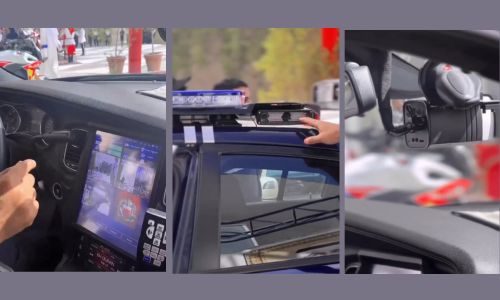Not just two, but seven vigilant eyes. Four are positioned atop the vehicle, providing a comprehensive 360-degree view, while three others are strategically placed inside the vehicle.
Meet Bahrain’s latest addition to its traffic patrol fleet: a sleek blue smart traffic car.
With a total of seven smart cameras onboard, this vehicle is poised to revolutionise enforcement efforts, officials say.
Termed a ‘game changer’ by the traffic department, it’s primed to catch violators with precision. With its advanced technology, drivers can anticipate a new era of vigilance and efficiency on the roads.
Know that fines will be promptly issued on the spot for violations such as not wearing seat belts, speeding, or running red lights. How it works?
Four cameras positioned above will capture licence plates, instantly displaying on-screen whether the vehicle is registered or if the driver has any violations.
This streamlined process eliminates the need for manual stops, allowing officers to monitor violations more effectively while ensuring smoother traffic flow.
Armed with speed detection gadgets, these cameras seamlessly integrate with the traffic control room, providing real-time monitoring of traffic conditions.
The plan is to roll out several of these vehicles to strengthen traffic safety.
500 smart cameras are on way It’s worth noting that Bahrain is planning to deploy 500 smart cameras in stages, as per a tender board document.
The first year will see 300 units installed, followed by an additional 200 units over the subsequent two years.
The project is currently in the bidding phase, with bids scheduled to close on the 24th of next month.
These smart traffic cameras enable real-time traffic redirection, assistance for stranded vehicles, and swift deployment of traffic patrols and tow trucks, effectively reducing congestion.
By providing real-time data, these devices empower authorities to make informed decisions that preempt traffic issues and identify areas requiring infrastructural improvements.






